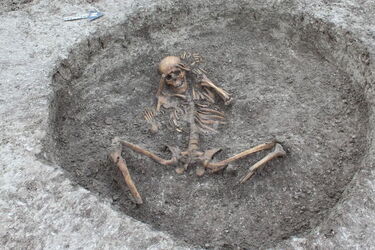Cruelty knew no bounds: scientists found that sacrifice was extremely common in the Neolithic era

A group of scientists plunged into the depths of history to reveal the secrets of the cruel rituals of the Stone Age. Their goal was to find out how common human sacrifice was in Europe at that time.
The beginning of the research was the study of skeletons found in a Neolithic tomb in the French Rhone Valley. Two of them belonged to women who died of suffocation, and their bodies were fixed in certain positions. One of the victims was probably buried alive. Gizmodo writes about it.
Further research has shown that sacrifices took place between 6,000 and 5,500 years ago and that a similar ritual form of killing has been used for 2 millennia.
"The lack of written sources is the main problem of archaeology, especially when it comes to prehistoric times," the authors of the study note.
However, there are certain indicators of ritual sacrifices. For example, unusual body positions. Many bog bodies - well-preserved remains found in the ancient bogs of Northern Europe – testify to ritual killings.
Skeletons from the Rhône Valley were discovered in a tomb built around the solstices. This suggests that deities associated with agriculture were revered at the site, and human sacrifice was likely used as a form of worship.
"The specific arrangement of the bodies – stacked on top of each other and with fragments of a grinding stone – indicates a deliberate placement with a clear ritual purpose," the researchers write.
Strangulation with ligatures is a form of ritual violence recorded throughout Europe. This method involved tying the victim's ankles and throat, leading to self-suffocation. Similar sacrifices are depicted in the cave paintings of Addaura in Italy.
Scientists studied 20 monuments in 14 different places – from modern Spain to the Czech Republic and from the north of Germany to the south of Sicily. The age of these monuments varies from 5400 BC to 3534 BC. Four of the alleged sacrificial victims are children.
"This cultural phenomenon could have spread in Central Europe for nearly two millennia before reaching its peak in the late Middle Neolithic," the researchers conclude.
